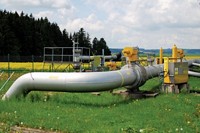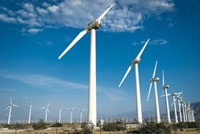Advertisement
Grab your lab coat. Let's get started
Welcome!
Welcome!
Create an account below to get 6 C&EN articles per month, receive newsletters and more - all free.
It seems this is your first time logging in online. Please enter the following information to continue.
As an ACS member you automatically get access to this site. All we need is few more details to create your reading experience.
Not you? Sign in with a different account.
Not you? Sign in with a different account.
ERROR 1
ERROR 1
ERROR 2
ERROR 2
ERROR 2
ERROR 2
ERROR 2
Password and Confirm password must match.
If you have an ACS member number, please enter it here so we can link this account to your membership. (optional)
ERROR 2
ACS values your privacy. By submitting your information, you are gaining access to C&EN and subscribing to our weekly newsletter. We use the information you provide to make your reading experience better, and we will never sell your data to third party members.
Climate Change
Methane emissions reach record levels
Regulations on agriculture could help keep the greenhouse gas in check
by Katherine Bourzac
July 15, 2020
| A version of this story appeared in
Volume 98, Issue 28

Methane emissions reached a record 596 million metric tons in 2017, the most recent year for which full data are available. Without swift and effective regulations to mitigate emissions of this greenhouse gas—which is shorter-lived in the atmosphere than carbon dioxide but has a stronger warming effect—scientists from the Global Carbon Project warn that the world is on a trajectory that matches the most aggressive predictions for global warming over the next century.
About two-thirds of the increase in anthropogenic methane emissions since 2009 have come primarily from agriculture—particularly red meat and dairy production, and to a lesser extent rice farming (Earth Syst. Sci. Data 2020, DOI: 10.5194/essd-12-1-2020 and Environ. Res. Lett. 2020, DOI: 10.1088/1748-9326/ab9ed2). Emissions from fossil fuel production and consumption account for about one-third of the increase.
Governments have focused on mitigating carbon dioxide emissions, and rightly so, says Robert Jackson, an atmospheric chemist at Stanford University. Jackson and Marielle Saunois, an atmospheric chemist at the University of Versailles Saint-Quentin-en-Yvelines, led the methane emissions project.
“We don’t want people to take their eye off CO2, but we want them to give methane more attention,” Jackson says. Last year, the concentration of methane in the atmosphere reached a record 1,875 ppb. This trajectory matches those of climate models that predict a global average temperature rise of 3–4 °C this century, says Jackson.
To come up with a global methane budget, project researchers combined information from stationary monitors and measurements taken by aircraft. Among other sources, they added up estimated emissions from the world’s oil and gas wells, wetlands, and rice paddies, and calculated methane burped by landfills and the planet’s 1.5 billion cows.
“Methane emissions from cattle are significantly higher than they were 10 or 15 years ago,” says Matthew Hayek, an environmental scientist at New York University who studies the environmental impacts of food systems and who was not involved with the methane inventory. “Beef and dairy make up a small fraction of people’s calories in most areas, but they are driving these emissions,” he says.
Jackson is optimistic that changes to agricultural practices can help. Meat and dairy farmers might give their animals supplements that discourage methane production in their animals’ guts. And it’s possible to capture methane from manure lagoons or store manure in ways that deter production of the greenhouse gas.
But Hayek says implementing these mitigation measures will be complicated, even where there is political will to do so. Feed supplements haven’t been demonstrated to work on large scales, only in the lab, and Hayek says there’s some evidence they might decrease meat and dairy productivity—which probably means farmers would compensate by raising even more cows, thereby canceling out the climate benefit. Hayek says it would be more effective in the short term to end subsidies for overproduction of red meat and dairy.
Jackson notes that Europe is a bright spot. The region has done more than any other to regulate methane emissions, requiring landfills to be capped. And people who live there are eating less red meat. New monitoring technologies may help, too. Satellites and drones are helping scientists detect methane super emitters, such as improperly capped oil and gas wells. The question is whether governments will choose to act on this information. “In the US there is no active national policy on methane emissions,” Jackson says.





Join the conversation
Contact the reporter
Submit a Letter to the Editor for publication
Engage with us on Twitter